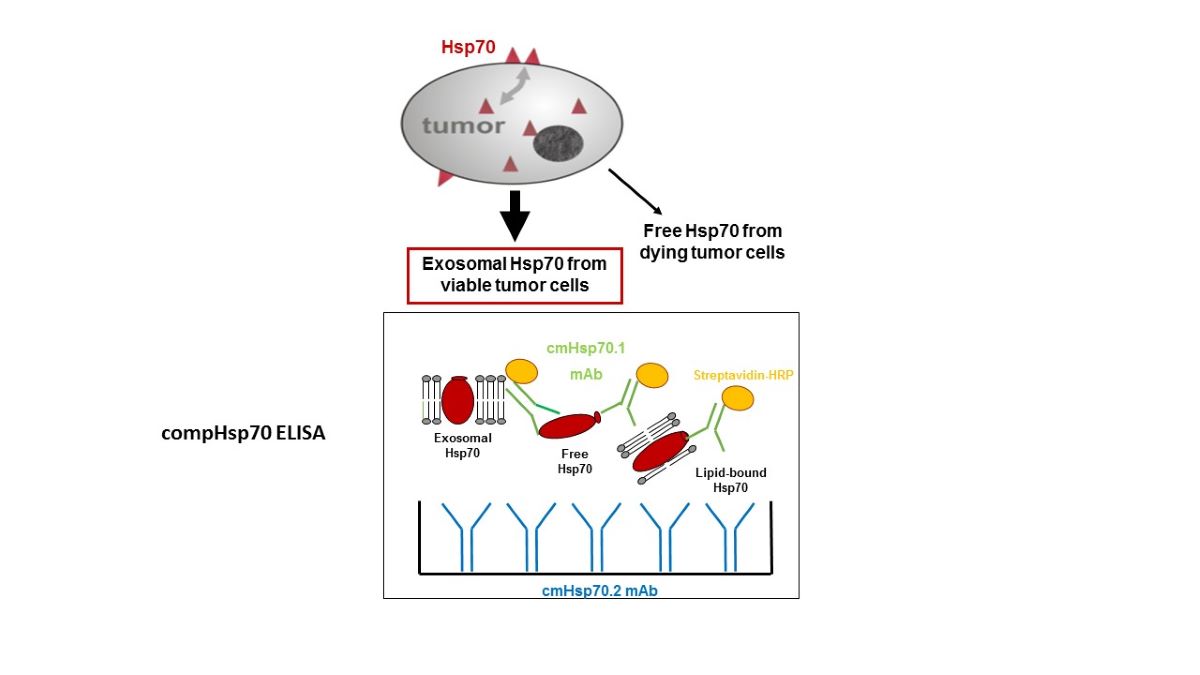Preprint
Article
Exosomal Hsp70 in Liquid Biopsies - A Biomarker for Prediction and Response Monitoring in Cancer
This version is not peer-reviewed.
Submitted:
20 May 2021
Posted:
21 May 2021
You are already at the latest version
A peer-reviewed article of this preprint also exists.
Abstract
In contrast to normal cells, tumor cells of multiple entities overexpress the Heat Shock Protein 70 (Hsp70) not only in the cytosol, but also present it on their plasma membrane in a tumor-specific manner. Furthermore, membrane-Hsp70 positive tumor cells actively release Hsp70 into lipid microvesicles termed exosomes into the blood. Due to conformational changes of Hsp70 in the lipid environment, most commercially available antibodies fail to detect membrane-bound and exosomal Hsp70. To fill this gap and to assess the role of exosomal Hsp70 in the circulation as a potential tumor biomarker, we established the novel complete Hsp70 (compHsp70) sandwich ELISA using two monoclonal antibodies (mAbs) that are able to recognize both, free and lipid-associated Hsp70 on the cell surface of viable tumor cells and exosomes. The epitopes of the mAbs cmHsp70.1 (aa 451-461) and cmHsp70.2 (aa 614-623) that are conserved among different species reside in the substrate-binding domain of Hsp70, with measured affinities of 0.42 nM and 0.44 nM, respectively. Validation of the compHsp70 ELISA revealed a high intra- and inter-assay precision, linearity in a concentration range of 1.56 to 25 ng/ml, high recovery rates of ‘spiked’ liposomal Hsp70 (>84%), comparable values between human serum and plasma samples, and no interference by food intake or age of the donors. Hsp70 concentrations in the circulation of patients with glioblastoma, squamous cell or adeno non-small cell lung carcinoma (NSCLC) at diagnosis were significantly higher than those of healthy volunteers. Hsp70 concentrations dropped concomitantly with the decrease in viable tumor mass on irradiation of patients with approximately 20 Gy (range 18 – 22.5 Gy) or after completion of radiotherapy (60 - 70 Gy). In summary, the compHsp70 ELISA presented herein provides a highly sensitive and reliable tool for measuring free and exosomal Hsp70 in liquid biopsies of tumor patients, levels of which can be used as a predictive tumor-specific biomarker, risk assessment and for monitoring therapeutic outcome.

Keywords:
Subject:
Medicine and Pharmacology - Immunology and AllergyCopyright: This open access article is published under a Creative Commons CC BY 4.0 license, which permit the free download, distribution, and reuse, provided that the author and preprint are cited in any reuse.
Alerts
MDPI Initiatives
Important Links
© 2025 MDPI (Basel, Switzerland) unless otherwise stated








